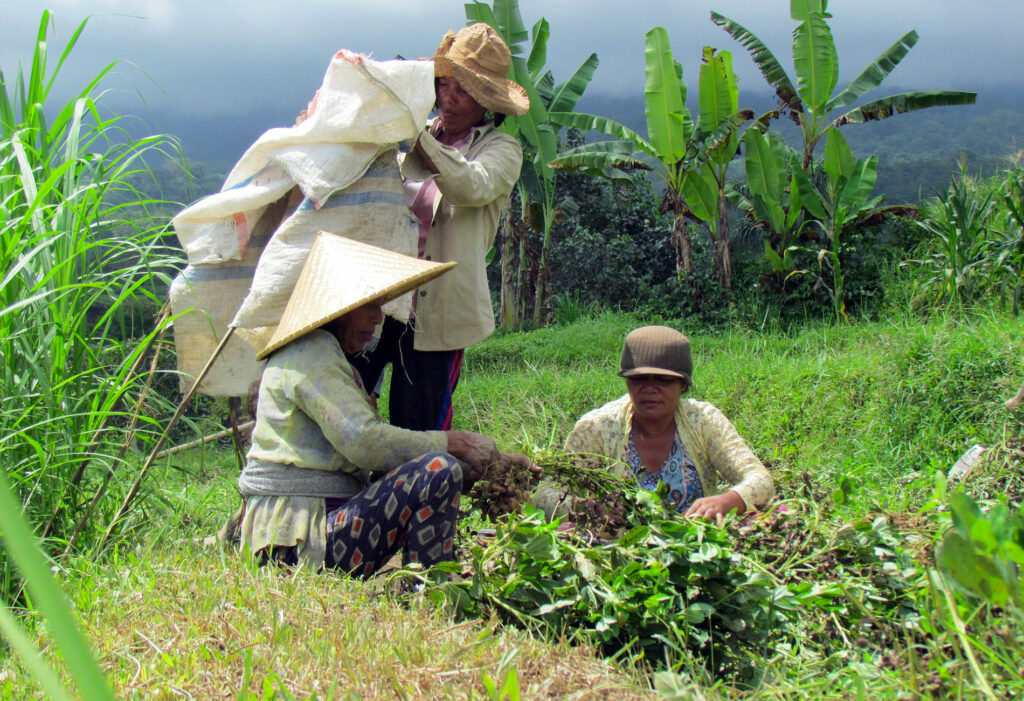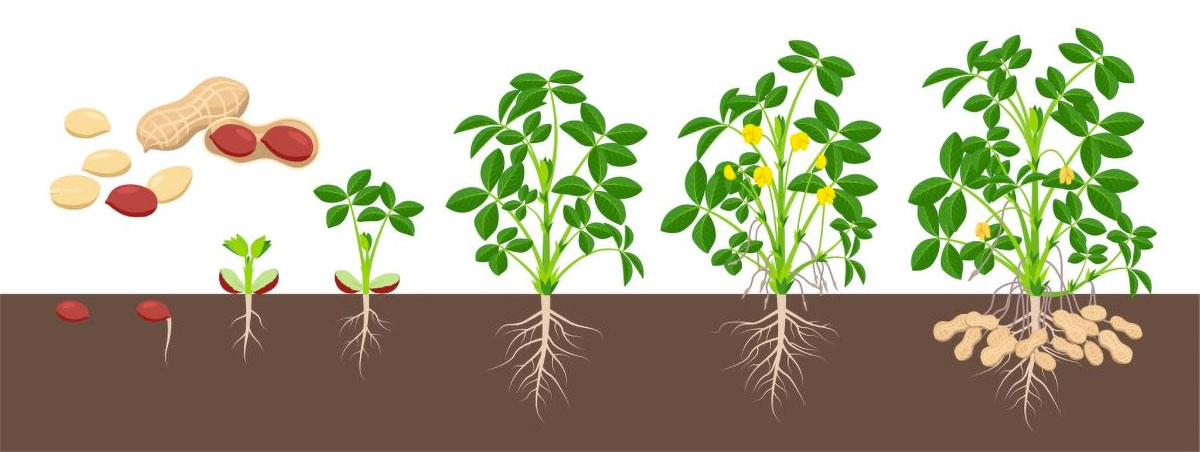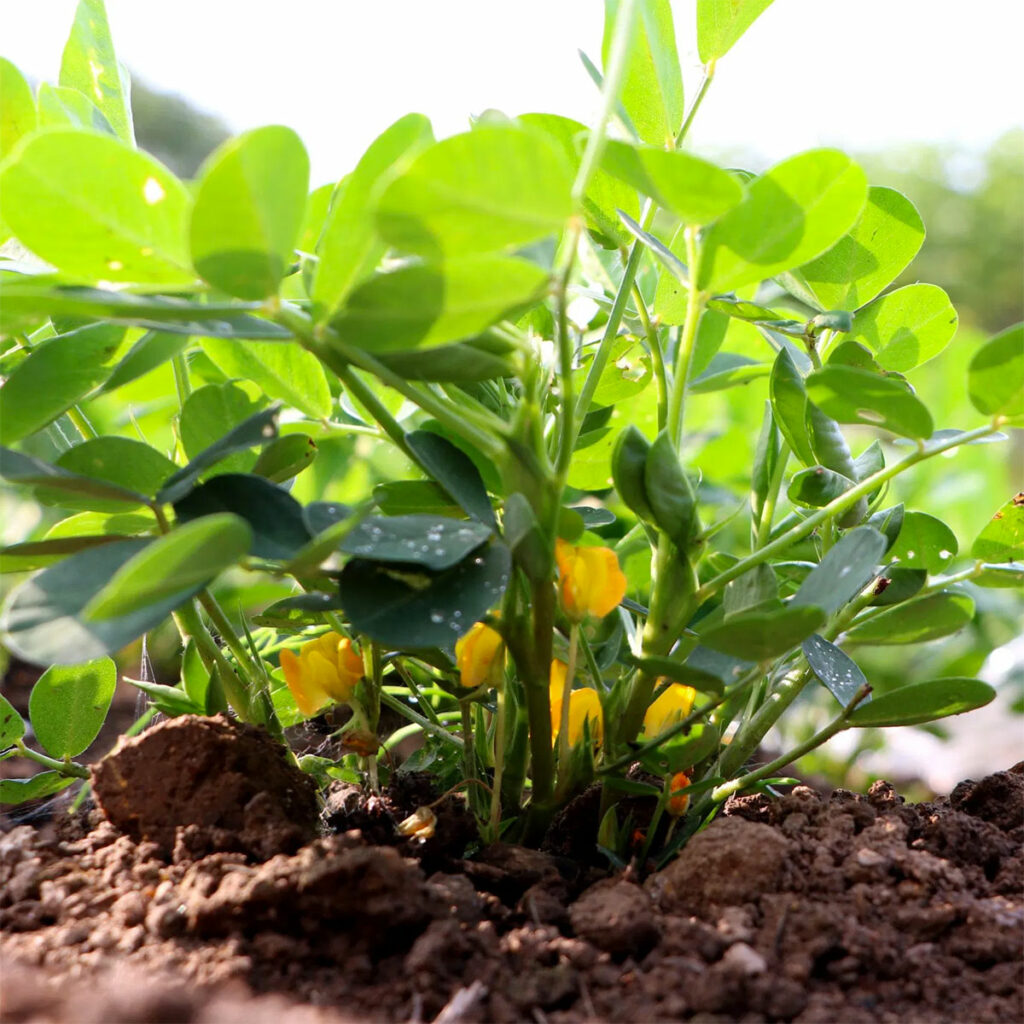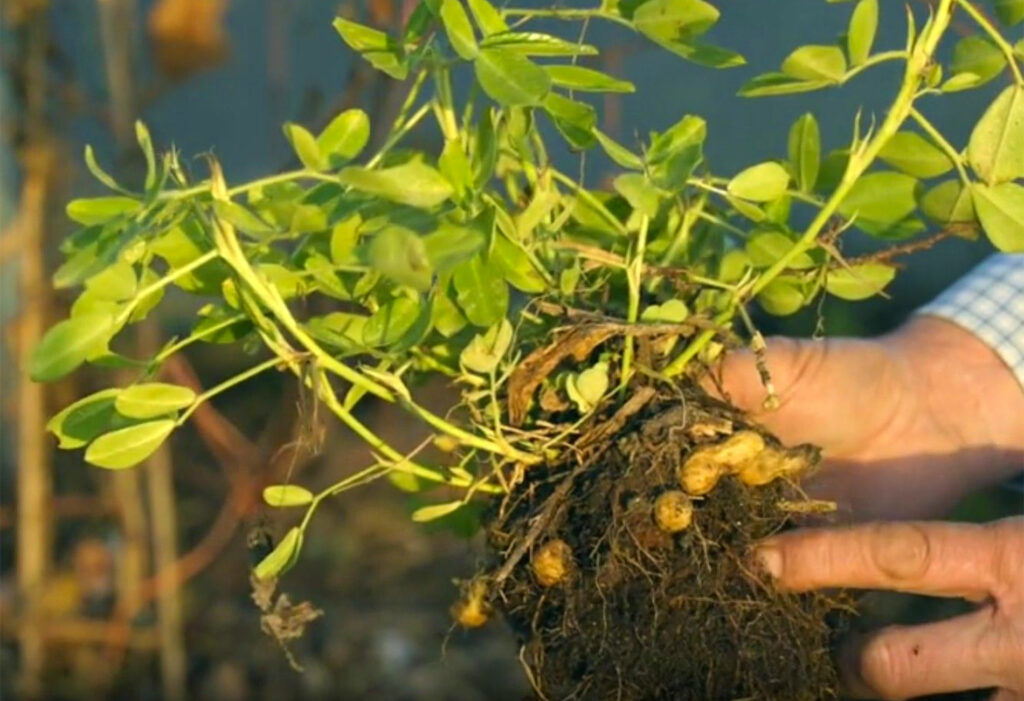No products in the basket.

Under the ground
Peanut (Arachis hypogeae) is grown for its edible seed. It is classified as a legume and belongs to the botanical family Fabiaceae. Unlike other legumes, peanuts have a positive geotropism, meaning the stems sink beneath the ground where the peanut seed will grow. This is why botanist Carl Linnaeus called it hypogaea, meaning “under the ground”.
Like most legumes, the peanut plant has the property of developing root nodules in which symbiotic bacteria fixes the atmospheric nitrogen. This has the advantage of reducing the plant’s need for nitrogen fertiliser, which is an important ecological benefit and improves soil fertility by making it a popular cultivation during crop rotations.


Steps in the growth of a peanut plant



Growing the peanut
Originating from South America, peanuts grow in temperatures ranging from 10 to 40°C, and do not resist frost. Its growing cycle lasts from 90 to 150 days.
The main peanut producers in the world are China (17 million tons) and India (8 million tons). American peanut farming, fourth in volume after Nigeria, accounts for almost 55,000 farms on 800,000 hectares.
Peanuts are a deep-rooted crop with roots up to two meters deep. This provides access to a large water supply, potentially reducing the amount of irrigation water needed.
The flowers are self-pollinated, but the presence of bees or rain improves pollination. A plant can produce up to 1000 flowers, but only 20% of them will produce a ripe fruit.
Once at a depth of 2 to 7 cm in the soil, the fruits develop and reach their maturity about 60 days after flowering resulting in the peanut pod.

The harvest
At harvest time, the peanuts are separated from the plants they come from. Those plants contain nutrients that are beneficial to the soil. Therefore, many peanut farmers use these plant residues as a source of fertiliser for subsequent crops, thus allowing them to reduce the use of chemical fertiliser.
The fibrous shell that houses the nut is often lost, but some companies process this biomass into granules for various applications.
After harvesting, drying and threshing is required in order to lower the humidity of the pods from 30-40% to 7-8% before storage and thus protecting the peanut from fungal.
0
centimeters,
minimum height of a peanut shoot
minimum height of a peanut shoot
0
million tons
peanuts produced in 2017
peanuts produced in 2017

Varieties of peanuts
Many varieties of peanuts exist. The most important are : the “Runner” which is mainly used for the production of peanut paste, the “Virginia” which is the peanut of gourmets and mainly used as an aperitif seed due to its large size and colour, the “Spanish” which is often used for organic cultivation and has a slightly higher fat content than other varieties.
Peanuts are either used as seeds (after shelling of the pods) or as oil (after industrial or artisanal crushing of the seeds) or in processed forms (butter, paste, flour or confectionery). By-products have many uses: fodder, fuel, composting, chipboard made from empty shells, food for animal consumption.

Continuous progress
Changes in demand and progress in the selection process have led to significant changes in the proposed plant material, from creeping to erect types with group fruiting; extension of early or drought-tolerant varieties in areas prone to climatic hazards; varieties resistant to certain viral diseases (rosette) and tolerant to various fungal diseases (rust, cercosporiosis); varieties meeting the standards of the market for peanut as an aperitif; varieties suitable for irrigated cultivation.
The current breeding programs are focused on improving the health of the product (tolerance to Aspergillus flavus and aflatoxin control), its nutritional value (optimization of amino acids and essential fatty acids), its resistance to predators, abiotic stress (salinity, acidity, shade).
